How Can I ID a Feather?
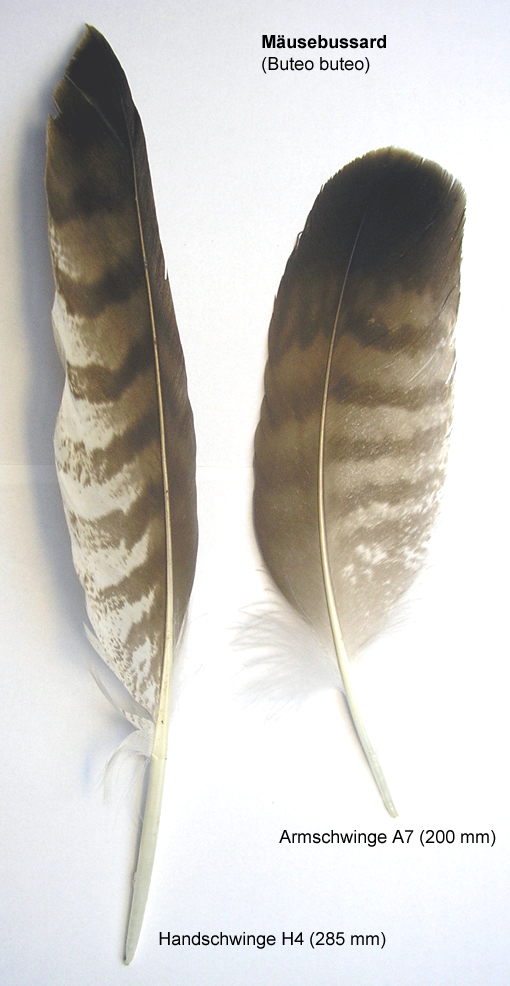
Quick Tips for IDing a Feather
If you're like me, you hike through the woods looking around for neat rocks, stones, shells, and feathers just like a magpie. I have a reason to collect, because I teach with what I find, so I don't just pick up stuff (and my institution has a permit for whatever I collect). However, for many people they just like to look for neat things in the woods as they hike or seek solitude. One of the most popular posts on this site has been about the US Fish and Wildlife Service's Feather Atlas. I'll include more information about that particular resource, but I wanted to start with a quick primer on the parts of a feather, and what you should be looking at when you find a feather and how to ID it.

I would be remiss if I didn't first warn you about possessing feathers, it's illegal for most birds. As stated on the U.S. Fish and Wildlife web page:
"The possession of feathers and other parts of native North American birds without a permit is prohibited by the Migratory Bird Treaty Act (MBTA). This protects wild birds by preventing their killing by collectors and the commercial trade in their feathers, and extends to all feathers, regardless of how they were obtained. There is no exemption for molted feathers or those taken from road- or window-killed birds. More information on the Migratory Bird Treaty Act, and the list of MBTA-protected species can be found at: https://www.fws.gov/migratorybirds/regulationspolicies/mbta/mbtintro.html."
This site also has a list of bird feathers that are OK to possess. It's really important that you educate yourself about what is and is not OK to own. You don't want to get pulled over for a traffic ticket or Fish and Wildlife check and get an big fine, and they are BIG! Those laws are an important part of protecting migratory birds, and even though it's a pain to figure out what is and isn't illegal the laws are super important to protect natural resources.
What Part of the Bird Did Your Feather Come From?
To identify a feather it helps to have at least some working knowledge of how a bird is put together and the names of each feather grouping on its body. A bird's feathers, collectively, are called plumage. It's a good idea to start with learning the topography of a bird, and its plumage.
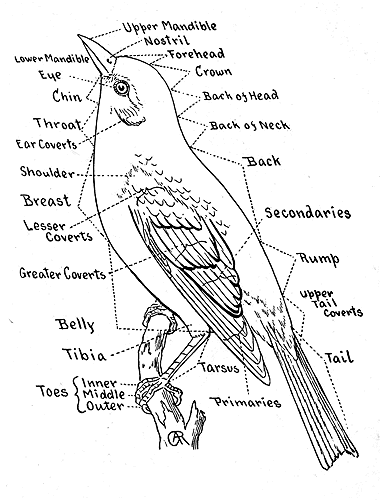
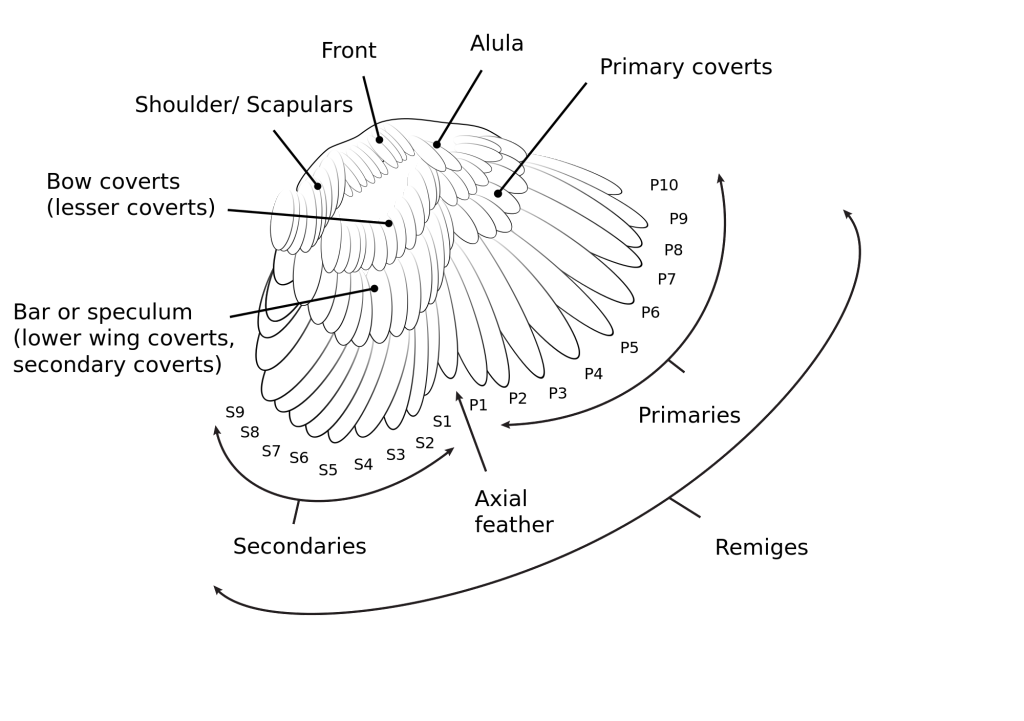
The Fish and Wildlife Feather Atlas, which is your best resource to ID a feather, will show you pictures of primary feathers (outer wing) and secondary feathers (inner wing) as well as retrices (tail feathers), and feathers from both males and females (because in some species males look different from females, this is called sexual dimorphism).
Don't worry if you don't know exactly what part of the bird your feather came from, but try to logically think through the shape and size of what you're looking at. Here are a few quick tips:
- Primary feathers (outer wing) tend to be more tapered at the tip, and less rounded. They are often longer, and seem to have a narrower leading edge (called the outer or anterior vane) than secondary feathers or tail feathers. They may have a notch in them toward the tip (on the posterior vane). I also find them more stiff, which makes sense for flying.
- Secondary feathers (inner wing) tend to be more rounded than primaries and are often shorter and thicker than other feathers. They too usually have a thin leading edge.
- Retrices (tail feathers) tend to be long and narrow, with equal amounts of barbing coming off the main shaft of the feather. They can also have a very distinct flat end, though some can be pointed (like woodpeckers).
- Body feathers (those from the neck, chest, head, or back, are usually short, with some sort of soft fluffy pluming around the base of the feather. They are also called "contour feathers" because they tend to be slightly curved, so that they can fit the body of the bird in nice insulating layers.
Feather Anatomy
I mentioned a few terms above that you may not be familiar with, which relate to the parts of a feather. When you're trying to ID a bird feather it also helps to know its anatomy.
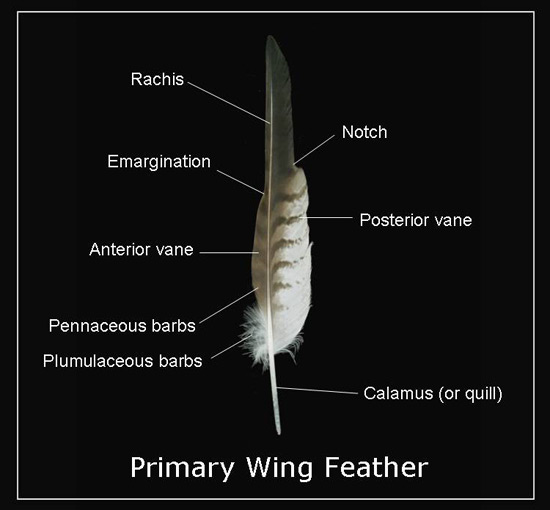
Once you are familiar with feather anatomy you're pretty much ready to start your feather ID, but you will want to have a ruler handy. The Feather Atlas, and other guides, will give you size ranges of birds and their feathers so you'll need to know size. One trick that I, and my fellow naturalists, use is to measure your index finger and its joints. (Often the center joint of your index finger is about an inch in length, so it's a "handy" little helper). You can then use your finger as a relative "ruler" for measuring other objects in the field when you don't have an actual ruler handy.
Start with Color
The main features you'll be using to ID your feather are shape, size, and color. Color is where things get tricky because a bird's tail, wing, and contour feathers are often different colors. On top of this there can be juvenile plumage, male and female plumage differences, seasonal plumage, and color differences between the top and bottom of the feather. Fortunately, most good bird field guides give you pictures of all of these variations, and the Feather Atlas does too.
As a rule, feathers are usually lighter on bottom (ventral) and darker on top (dorsal). This is called counter-shading. It's a useful feature for camouflage. The bird is dark on top, so when a predator sees it from above it blends in with its surroundings. It's lighter on bottom, so that it blends in with the sky while it's flying, and you look at it from above.
There are eight main types of feather color patterns that you should look for that are laid out by the Atlas:
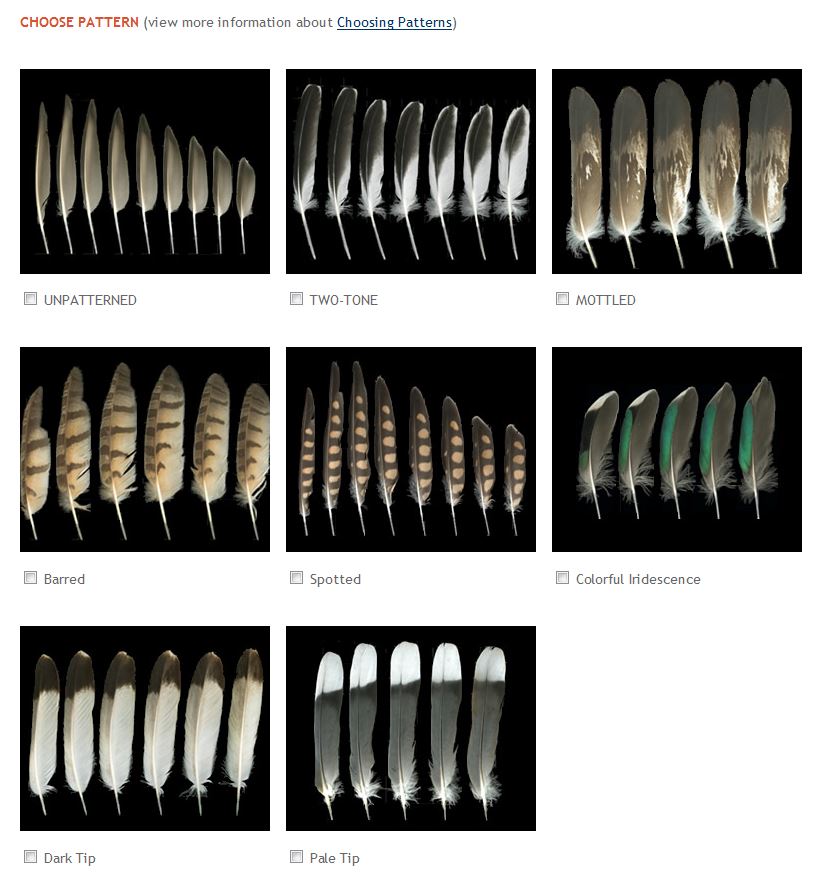
Once you know feather colors and patterns you can start to narrow down your search using the Atlas and it's online tools or a field guide. In the Atlas, after you put in your colors then it will give you a selection of feather types of species to choose from and you can go from there.
It's hard to make generalizations about bird families based on colors, because there are LOTS of different variations out there. However, usually members of the woodpecker family have spotted feathers, water fowl can have iridescence, owls and predatory birds usually have barring (so do turkeys), dark tips can be found in many game birds, and pale tips can often be found in pigeons and ground birds. Mottled feathers can be eagles or water birds, while un-patterened or one color can be from sparrows or other tree and shrub based birds.
There is no quick and easy way to ID a feather other than doing your homework, using a good guide, studying mounted specimens, or visiting with local naturalists and bird experts. It's a skill that you have to hone by looking at live birds, correlating where the birds live and where you found the feathers, and figuring out what time of year it is and how this might relate to plumage.
This blog post is just a quick start to get you going. I would suggest that if you're serious about feather ID that you purchase the book by S. David Scott and Casey McFarland, "Bird Feathers: A Guide to North American Species."
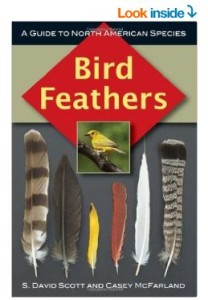
Their book is much more comprehensive than the online Feather Atlas, and it also gives you photos of not just wing feathers, but contour feathers as well. Good luck in your avian feather ID adventures!
UPDATE: A new feather ID database is on the scene now too, it's called Featherbase. Despite the fact that it's in German the bird names are in English and scientific notation so it's still easy to use. Try their website: https://www.featherbase.info/en/home.

